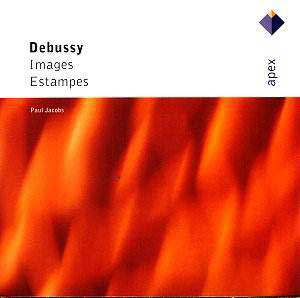Some of Debussy best and most subtle piano music is found here,
in performances which capture exactly the right tone. Paul Jacobs scrupulously
observes Debussy's score markings, and the results are particularly pleasing.
The recital opens with a novelty, the group of the
three pieces written in 894 under the collective title Images, the first
time that Debussy had used this favourite term. But in truth they are
pale shadows of the real thing, as the remainder of the disc shows.
For Jacobs gives some beautifully paced and cleanly articulated readings,
allowing the miraculously details of Debussy's carefully constructed
and atmospheric music to be felt.
The composer was not personally fond of the word 'impressionism',
though of course most people would readily associate it with this repertoire.
The reason for his doubts was surely that there is an implication of
inexactness, even vagueness, whereas his music is extraordinary in its
close organisation and attention to detail, in which every little aspect
of the detail relates to the larger issues. These important ideas arise
thanks to the scrupulously prepared and thoughtful performances which
Jacobs gives here. Rarely can Reflets dans l'eau, the first of
the Images, Series I, have enjoyed such graceful and limpid articulation,
perfectly creating the music's unique atmosphere and style.
And so it goes on. The three pieces of Series II are
imaginatively paced and shaped also. For example, I particularly enjoyed
the way that Jacobs allowed the rhythmic figures to make their telling
point in Et la lune descend sur le temple qui fut. Much the same
can be said of the three Estampes. The Spanish rhythms of La
Soirée dans Grenade, the limpid phrases of Jardins sous
la pluie, are imaginatively caught. If this reissue has a fault
it is in the recording, which although satisfactory enough, does tend
toward dryness. More recent performances have been more atmospherically
realised, but at budget price this recital is certainly worth serious
consideration.
Terry Barfoot


